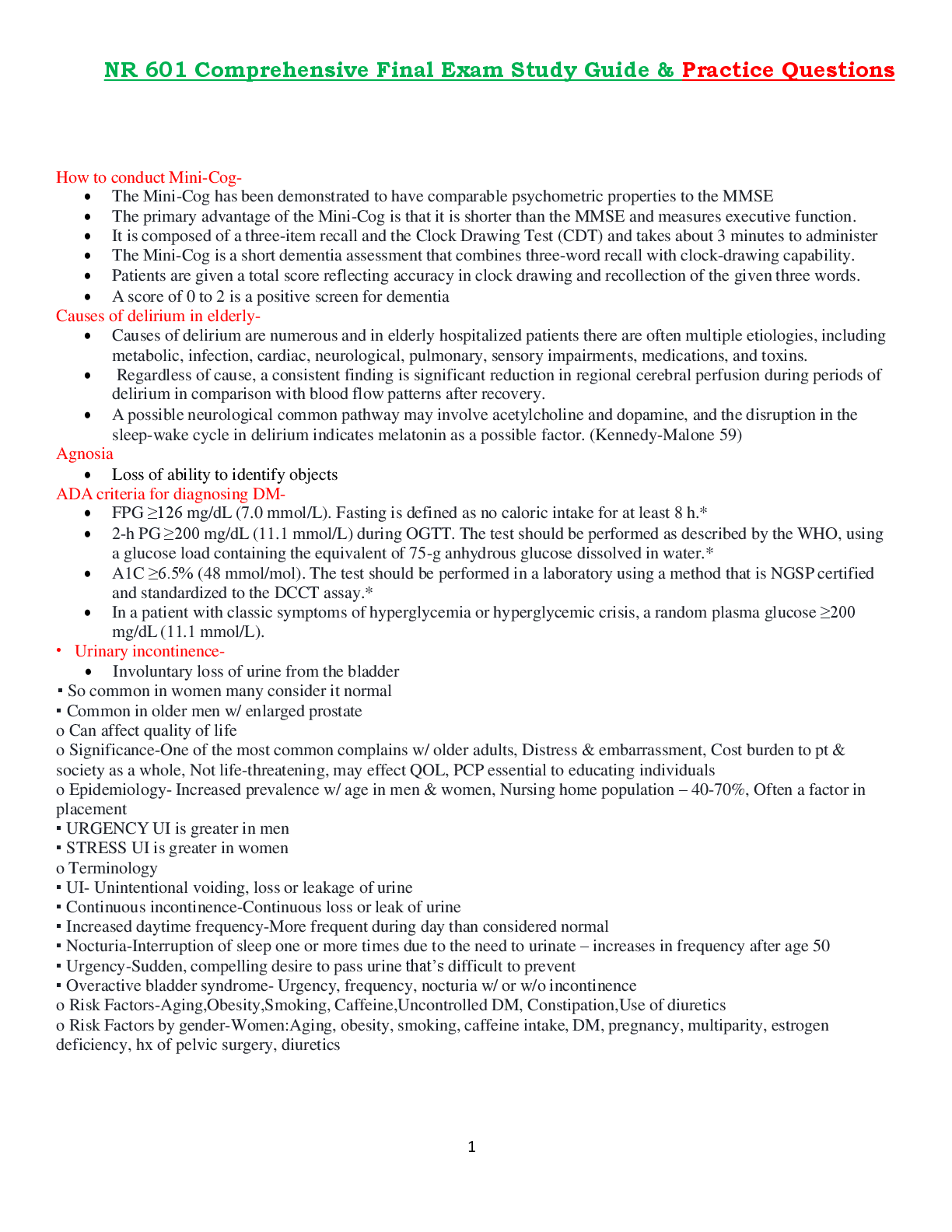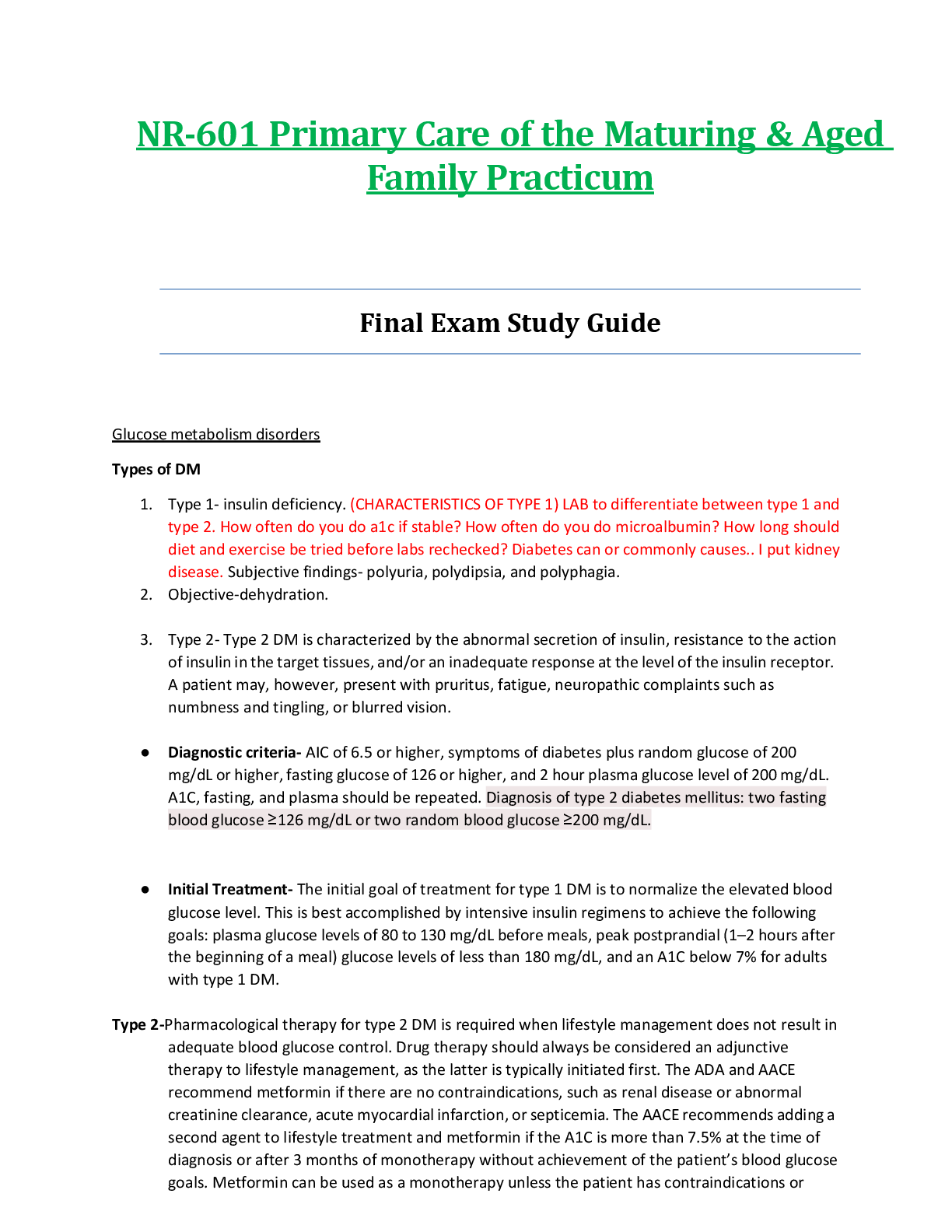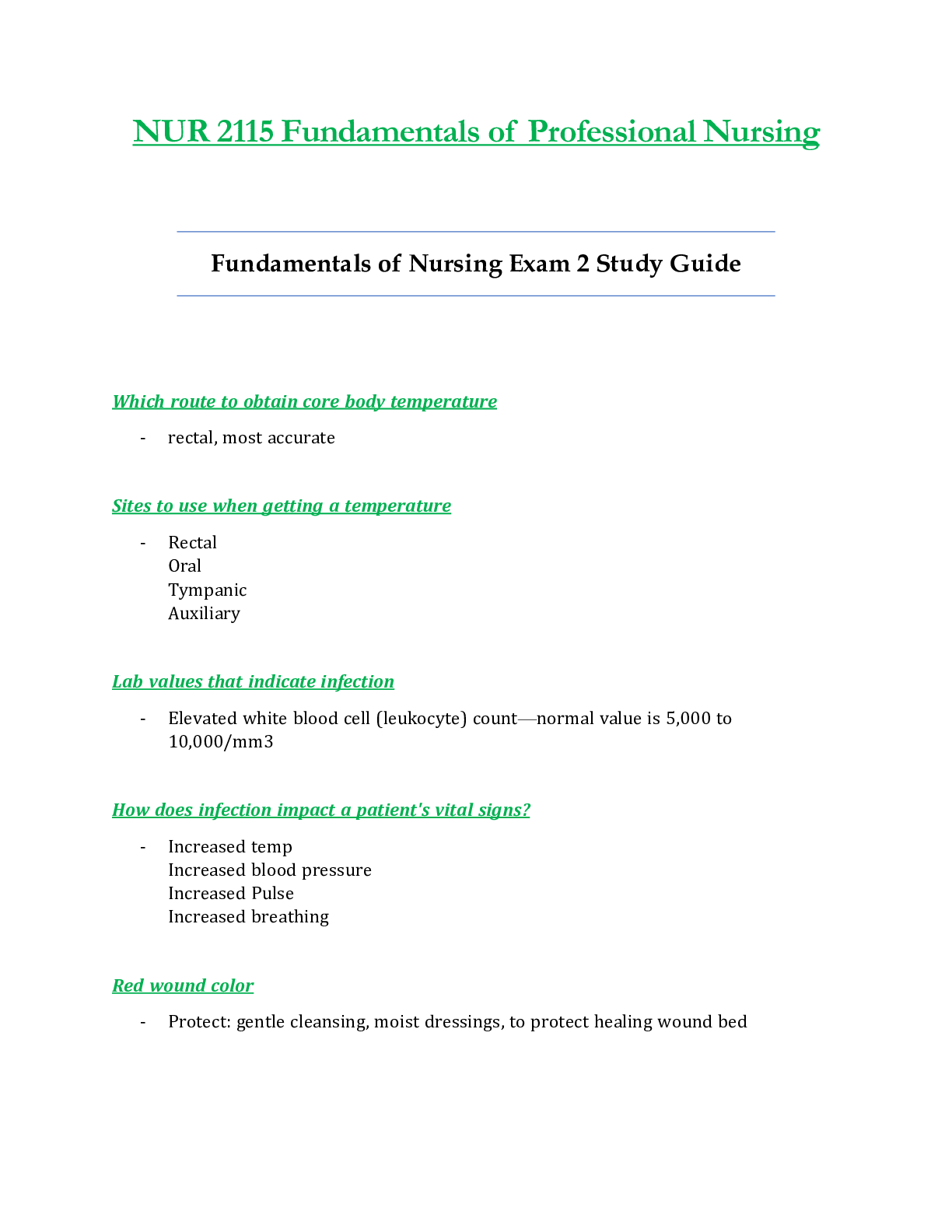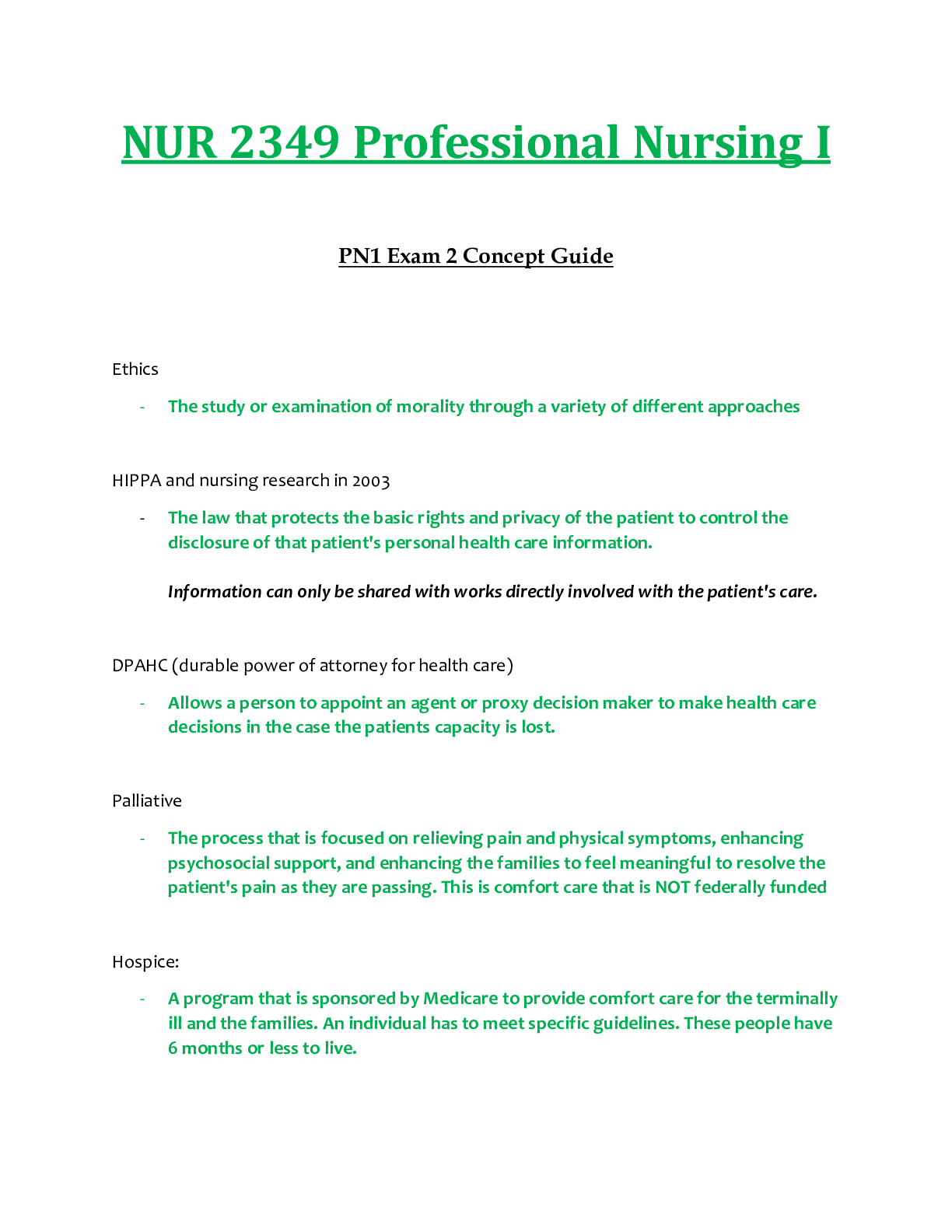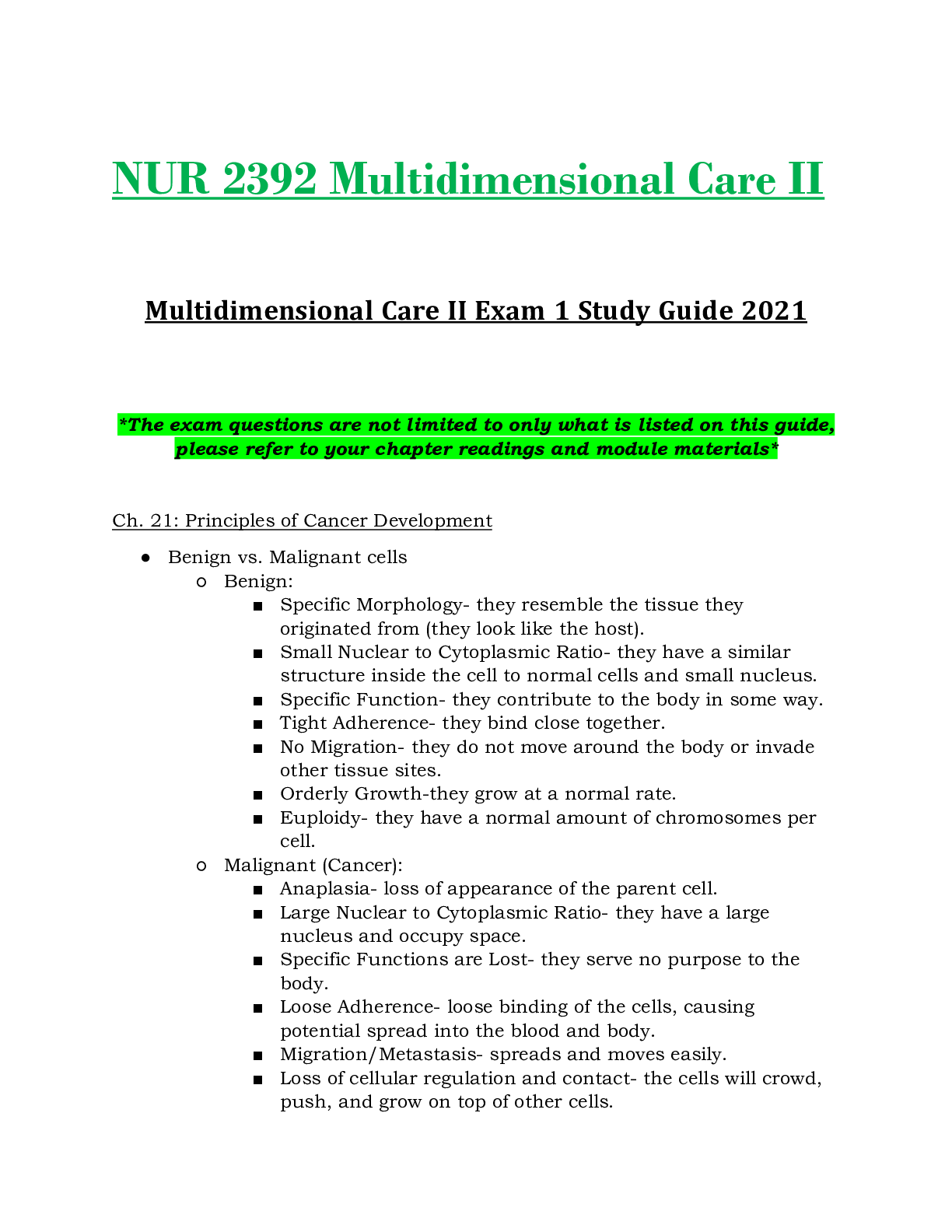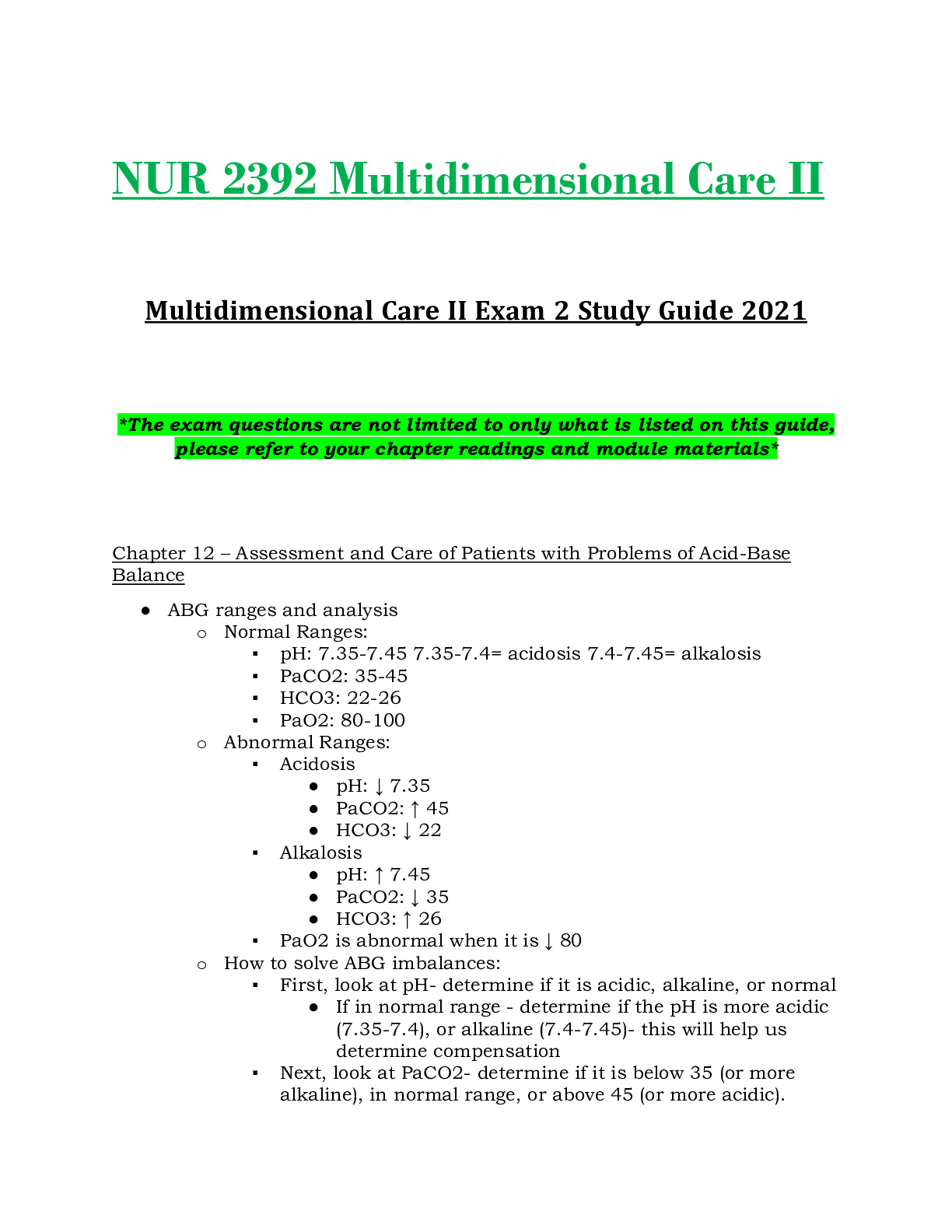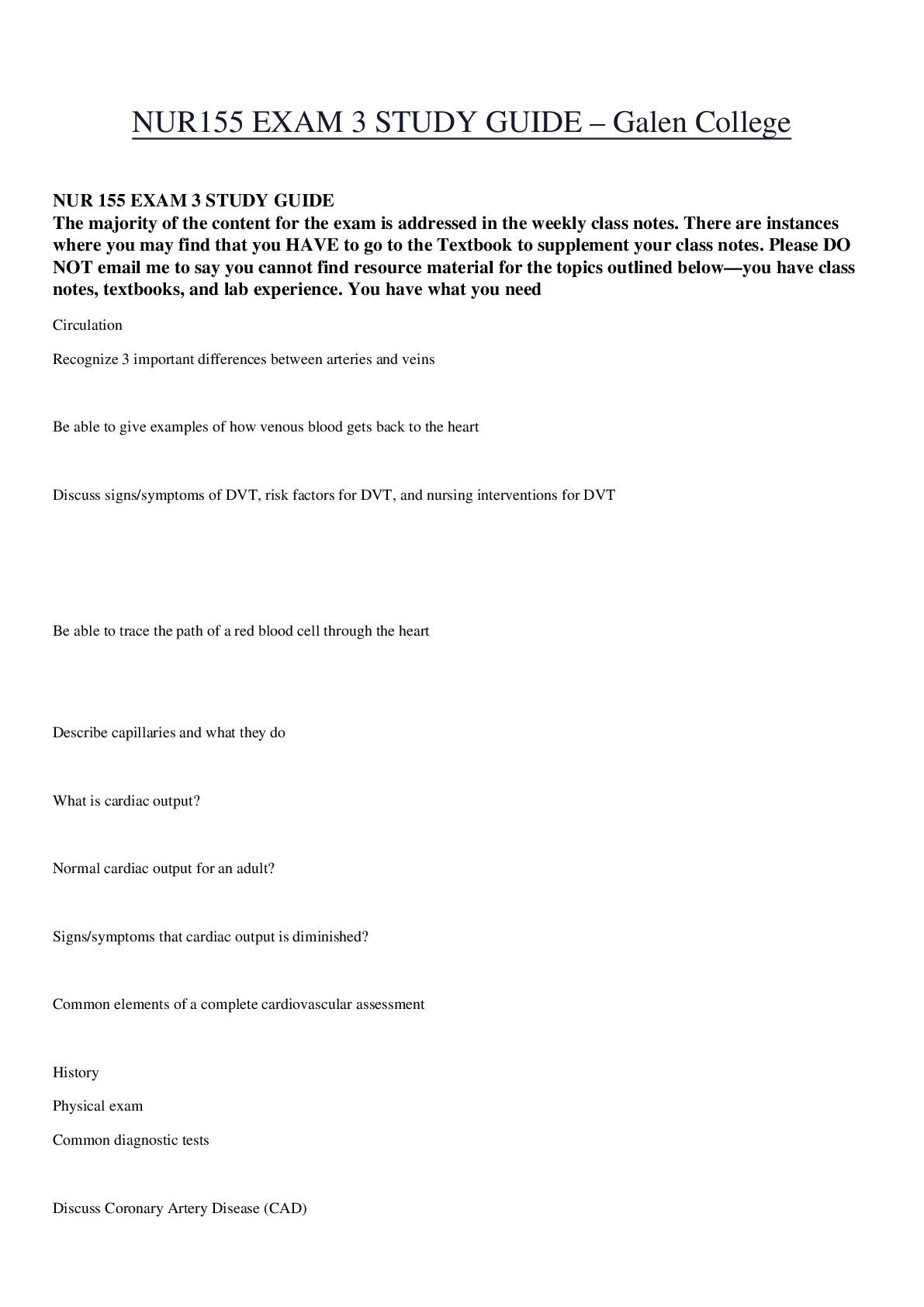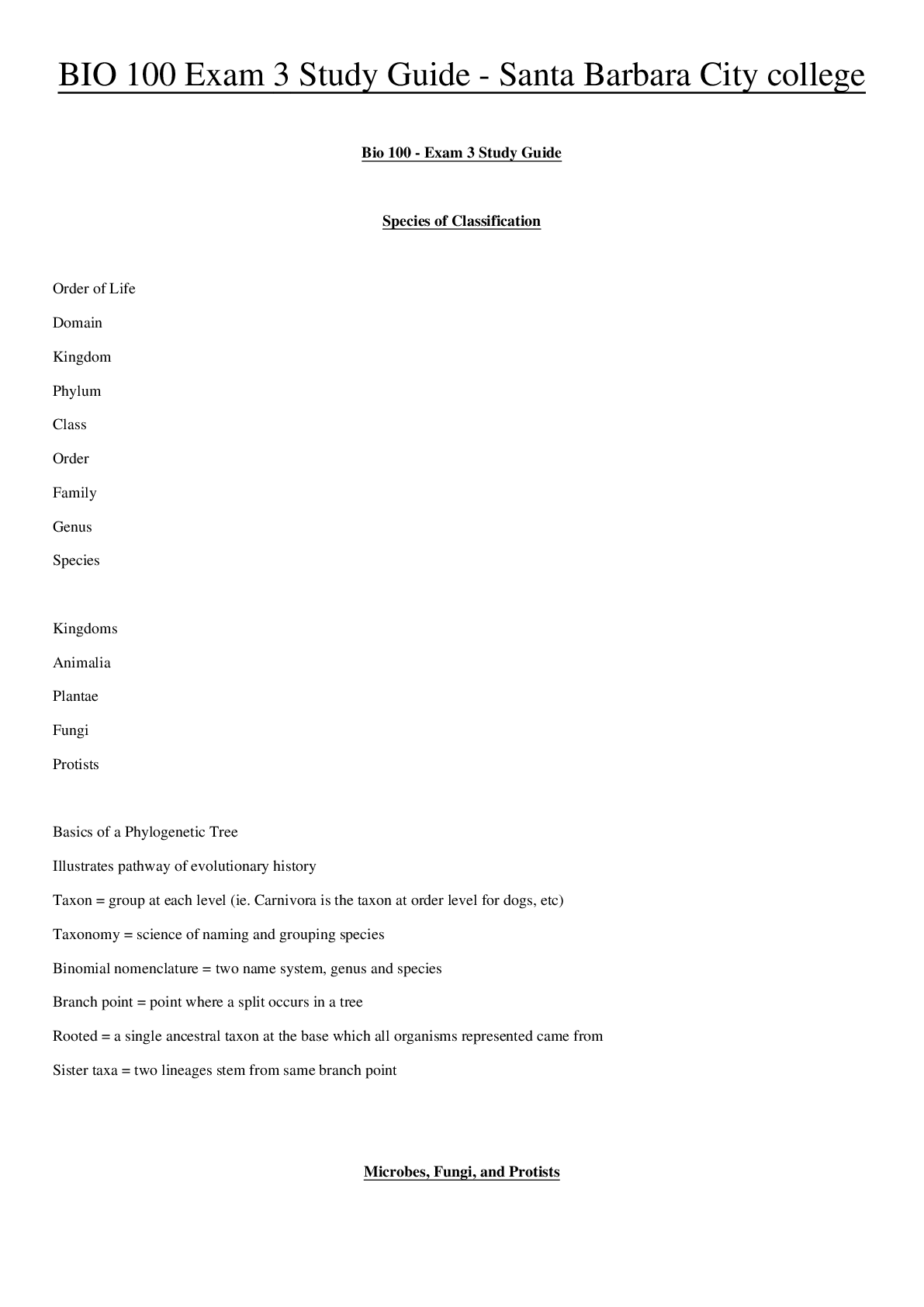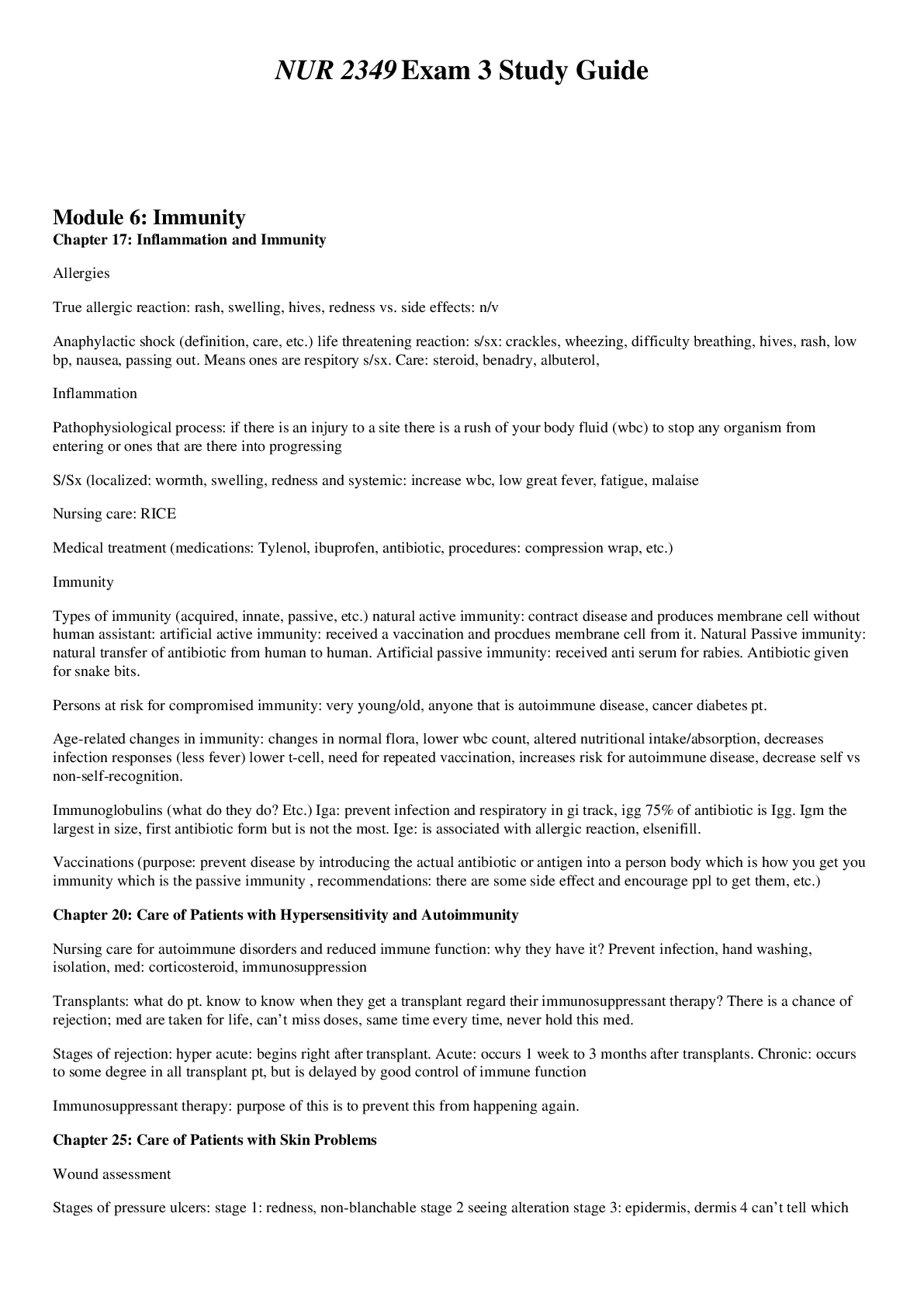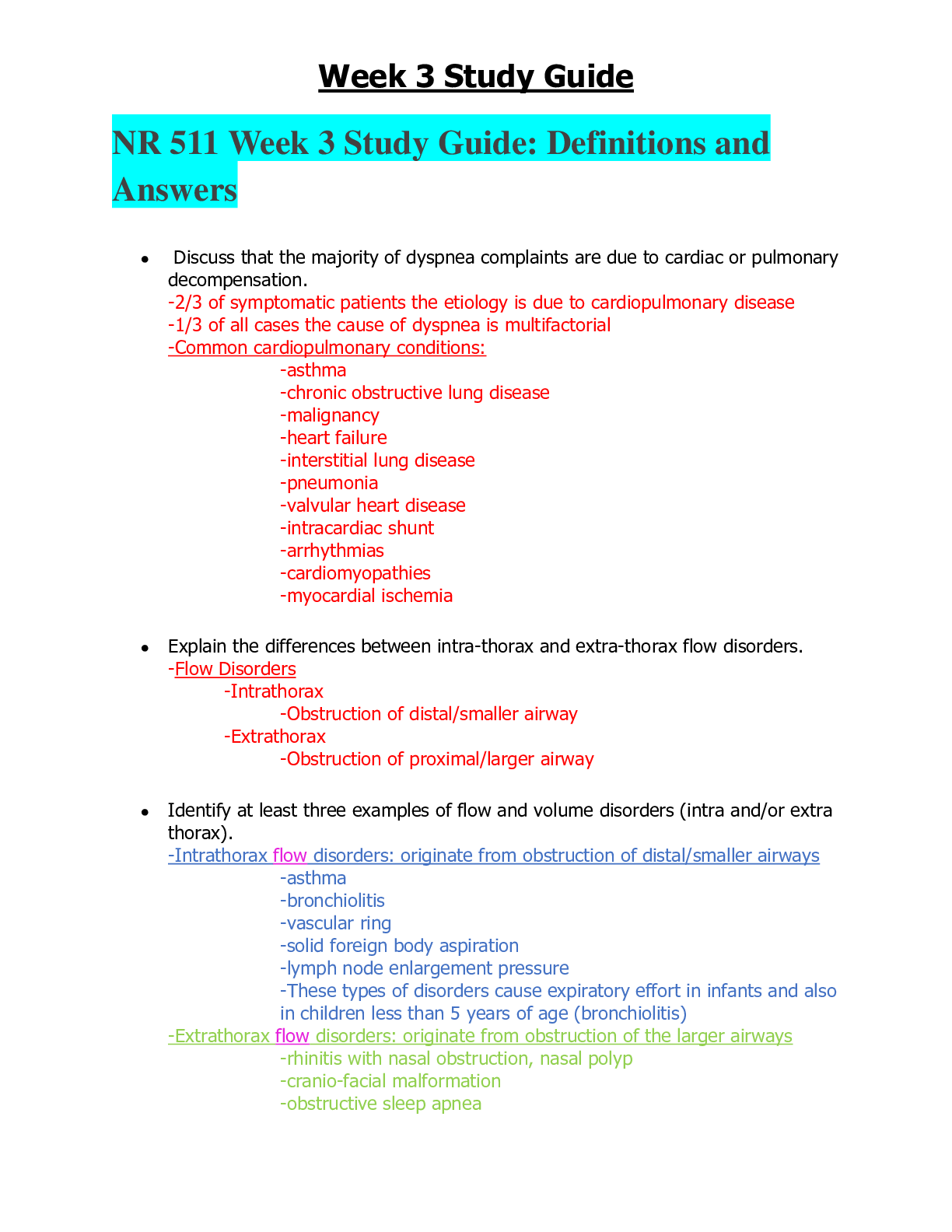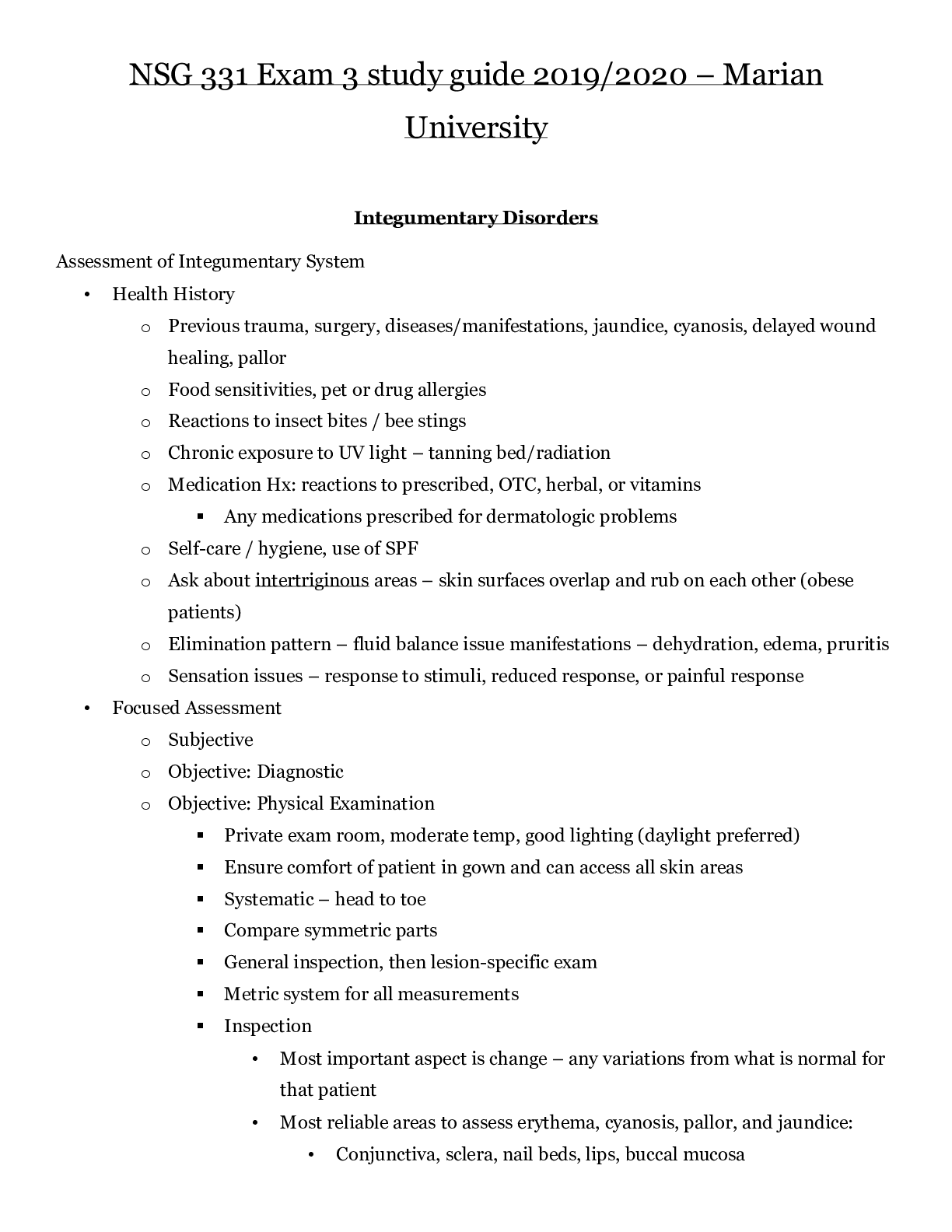*NURSING > STUDY GUIDE > NUR 2633 / NUR2633 Exam 3 Study Guide (Latest Update): Maternal Child Health Nursing - Rasmussen (All)
NUR 2633 / NUR2633 Exam 3 Study Guide (Latest Update): Maternal Child Health Nursing - Rasmussen
Document Content and Description Below
NUR 2633 Maternal Child Health Nursing Exam 3 Study Guide Non-Pharm methods to alleviate pain -music and distraction -relaxation -holding hand -cuddling -reassurance -For baby use non-nutriti... ve suckling, cuddling, sugar water -Play, toys, draw pictures What is different, and what are the myths and fallacies regarding "pain management in children"? Myth: children don't feel pain, neonates don't feel pain due to immature nervous system. They become accustomed to pain, pain doesn't last as long, and children should learn to tolerate pain for later in life. -Pain in children=*ALWAYS treat pain to validated level of response. Chart pain, intervention and response. What drug is most frequently used for severe or postoperative pain in children? *Most common medication used post-op pain is morphine* - Biggest risk - Respiratory depression. • Titrate meds very carefully; until 110 lbs. or 50 kg use adult dose, cannot continue to use age and weight=overdose • When child is 50 kg they can go up to the adult dosing • Aware of Respiratory depression, liver and kidneys functional, hydrated well, addiction possibility What are the non-pharmacological measures used to enhance medication or change the pain perception? - Non-pharm: guided imagery, distraction, play, music, massage, aromatherapy, pet therapy, hand holding, deep breathing, parental presence, play, non-nutritive sucking, playing with toys. Milestones of infants to toddlers - Be aware of these so if a child has not reached a milestone, what questions should you be asking and when do we alert the MD? *Infancy- greatest rate for growth at 6 mo. (7 lb.) Double birth weight @ 6 months (14), and triple weight by 1 year old (21lbs). *Children; grow from head to tail, middle to distal, simple to complex, grow at the same steps but not the same rates. * Anterior fontanelles close 12-18 months, 6-8 weeks posterior fontanelles close [Show More]
Last updated: 2 years ago
Preview 1 out of 49 pages

Buy this document to get the full access instantly
Instant Download Access after purchase
Buy NowInstant download
We Accept:

Reviews( 0 )
$10.00
Can't find what you want? Try our AI powered Search
Document information
Connected school, study & course
About the document
Uploaded On
Mar 30, 2021
Number of pages
49
Written in
Additional information
This document has been written for:
Uploaded
Mar 30, 2021
Downloads
0
Views
93

